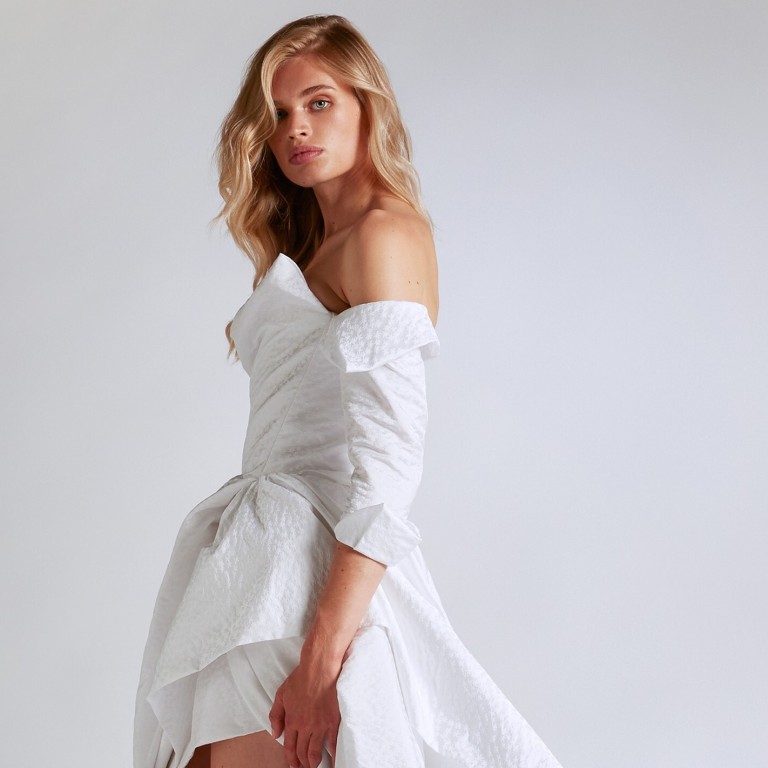How to find the perfect wedding dress: Kim Kardashian went for the ‘mermaid’ and Meghan Markle opted for A-line – for the best results, always start with your body shape, say experts

Thanks to Covid-19, a lot of wedding dress shopping has gone online, so we asked the experts for their top tips on choosing the perfect fit, even when you can’t initially try the dress on
According to Jacqueline Au, founder and creative director of The Loft Bridal boutique in Hong Kong, most gowns fall into one of five shapes: ball gown, mermaid, A-line, trumpet and column. “Brides should always tackle the shape first and details later. The shape and fit of a gown is everything,” she says. “You will then find it a lot easier to focus and won’t be wasting time nitpicking over details in the beginning, such as lace, embroidery or the bow.” And while the bride’s body shape is important, what’s also important is the silhouette she wishes to have in the final look, as well as things she wants to accentuate.


Those who find a ball gown too voluminous but wish to show off a nipped waistline may want to opt for an elongating A-line, a less dramatic alternative. If you have curves to spare though, the mermaid will be your go-to option, particularly for those who are tall, as it emphasises the body’s shape. One Day Bridal’s Sadie gown is a good example, plus its minimal embellishments make sure that all eyes stay on an hourglass figure. “But this shape can make a petite woman look shorter, as the skirt does not have a lot of room to flare out below the knee. However, with a trumpet shape, the skirt flares out just below the thigh to a graceful train that sweeps the floor.”
A column shape is best suited for those with a slimmer or more boyish frame, particularly if the fabric is flowy without the typical boning and corsetry associated with bridal gowns – think Carolyn Bessette-Kennedy in that Narciso Rodriguez sheath. A modern take on this is Westwood’s Minerva gown, a silk-satin number with a draped neckline that sweeps across the shoulder, “creating the illusion of a fuller bosom”, Au notes.

But while there are plenty of gowns to choose from on the market, many brides might still relish the opportunity to work with a custom gown designer. Noel Chu, an industry veteran, says women come to her more to execute unusual requirements. “They might have an unusual body type or want to combine elements of several dresses, or they want something not easy to find, like a folk costume or a jumpsuit,” she says. What makes the process more enjoyable for the bride is that she will dictate elements she desires. For example, a low back can emphasis curves, or a sheer bodice can be made a little more conservative for church by adding a detachable fabric panel.